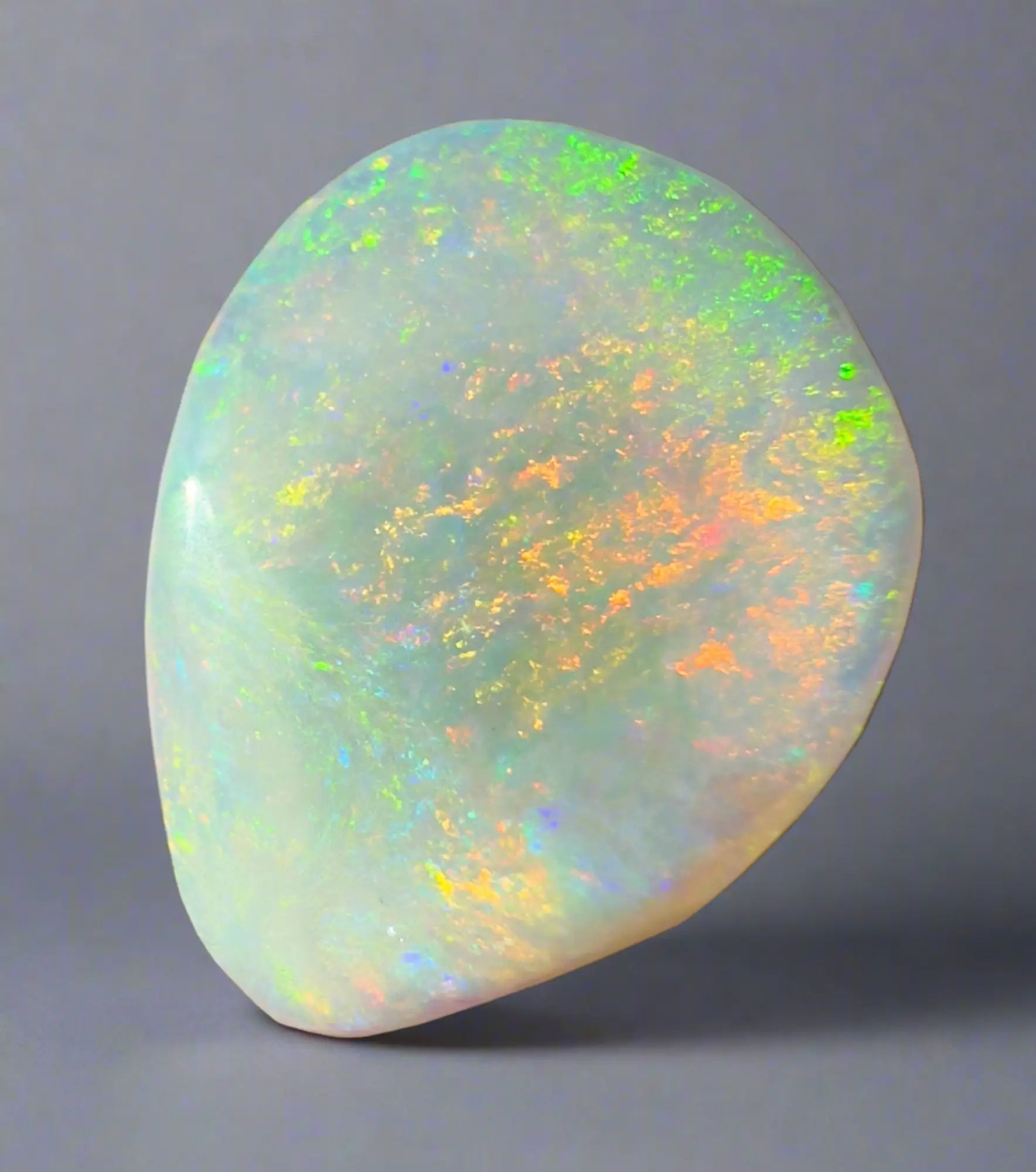
Famous Australian Queensland Boulder Opal: Beauty in a Boulder
Boulder opals are exclusively found in Queensland, Australia, with primary opal fields located in Winton, Opalton, Quilpie, Yowah, Eromanga, Cunnamulla, and Longreach.
Characteristics of Boulder Opal
Boulder opals are easily identified by the solid brown ironstone layer left on the back of the stone. This type of opal is mined from large ironstone boulders underground, often using open-cut mining techniques with excavators. Unlike other opals, boulder opals are typically cut in freeform shapes to best display the colourful veins on the stone's surface. The ironstone backing enhances the vividness and vibrancy of the opal, often referred to as a natural doublet.
Ironstone can sometimes be visible on the surface of boulder opals, affecting their appearance and value. Opals without visible ironstone are rare and highly prized. Due to the significant weight difference between ironstone and sandstone, valuing boulder opals per carat is not common unless there is no ironstone present. High-quality pieces can be worth up to $3,500 AUD per Carat.
Boulder opals form within cracks and fissures in ironstone boulders, resulting in unique and highly sought-after patterns such as:
- Koroit Opal/Yowah Nut: Precious opal formed in siliceous ironstone nodules with vibrant ripples of colour.
- Opal Matrix: Opal formed in the in-filings of pores or holes between grains of the host rock.
A form of boulder opal known as Matrix opal is also found in Andamooka, South Australia, where it forms within limestone and is often treated to darken the host rock, enhancing the opal's colour.
Formation
Opals form when crevices in the earth fill with silica-rich water, leaving silica deposits behind. These spherical deposits stack in layers, creating gaps that diffract light like a prism, producing the opal's stunning colours and patterns.
Boulder opal is unique to the eastern shore of the ancient inland sea, forming vibrant seams that can be split along natural fault lines to reveal opal faces. Unlike other opals, boulder opals form within the concretion of ironstone, often resulting in thin veins of colour. Opal cutters typically leave the ironstone backing to form a full-sized stone, with the thin opal layer displaying any colour of the spectrum.
You can shop for these opals in-store at ionaopal.com.
Tips for Cutting Boulder Opal
Cutting boulder opal differs from other Australian opals due to the hardness of the host rock, which is similar to Andamooka opal. The process can be messy, as ironstone stains everything, and requires a different approach to maximise colour.
Boulder opals are often cut with a flat face because their colour layers are thin and cannot pass the light test due to their opaque base. The best approach is to follow the veins of colour in the ironstone. Use lighter grits, such as 600 grit for careful hands and 1200 for less experienced hands, to ensure a smooth face without pits.
When polishing, 50,000 grit diamond polishing compound is preferred over cerium oxide. Cerium oxide can fill the porous crevices of the opal, leaving visible white spots on the host rock. The darker appearance of diamond paste is less noticeable and provides a better finish for these types of opals.




Leave a comment
This site is protected by hCaptcha and the hCaptcha Privacy Policy and Terms of Service apply.